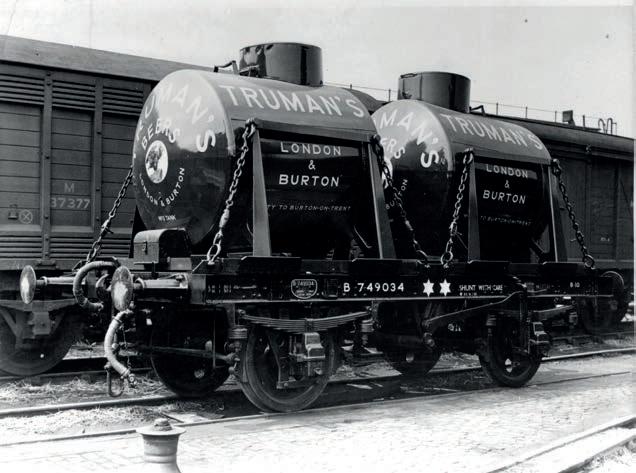RAILWAYS THROUGH THE AGES
A Selection of Industrial and Passenger Railways

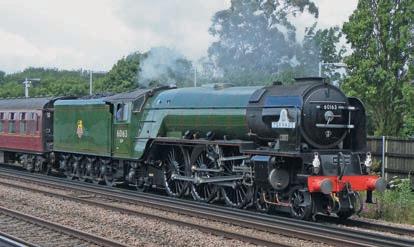
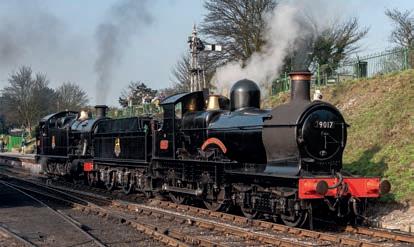

Past & Present
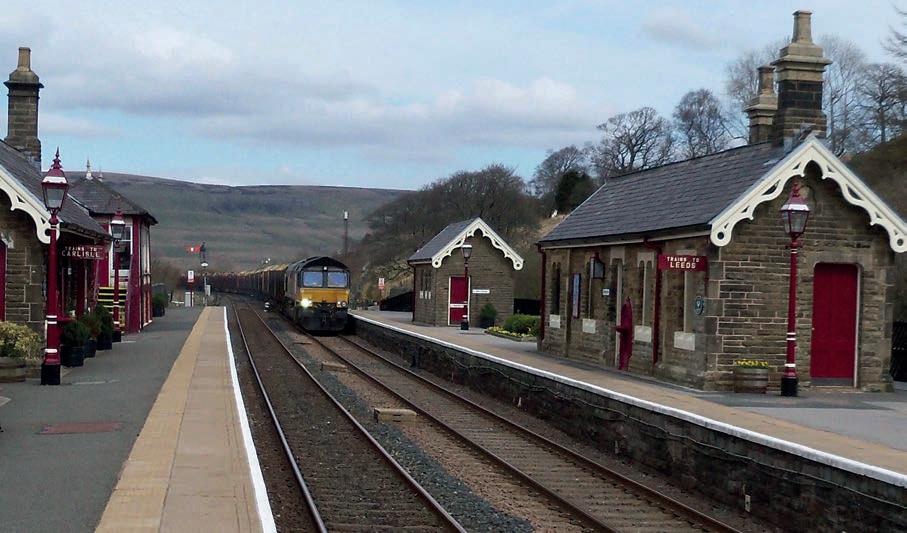 John Legg and Ian Peaty
John Legg and Ian Peaty
Dedicated to our wives, Rosemary and Norma, for their tolerance over our obsession with railways both at home and abroad.
First published in Great Britain in 2023 by Silver Link Books
an imprint of Mortons Books Ltd

Media Centre
Morton Way
Horncastle LN9 6JR
www.mortonsbooks.co.uk
Copyright © Silver Link Books 2023
All rights reserved. No part of this publication
may be reproduced or transmitted in any form or by any means, electronic or mechanical including photocopying, recording, or any information storage retrieval system without prior permission in writing from the publisher.
ISBN 978 1 85794 597 3
e right of John Legg and Ian Peaty to be identi ed as the authors of this work has been asserted in accordance with the Copyright, Designs and Patents Act 1988.
About the authors
John and Ian have been good friends for 60 years, which started when both of their wives worked at the same life assurance company in South Woodford. Since then they have raised their families, worked hard and of course, now retired. ey have always had a great interest in railways, but work and family commitments severely reduced the time they could spend pursuing railways until the latter years.
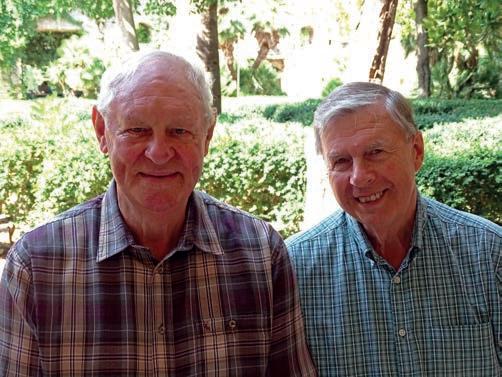
Ian worked in the brewing business for many years, using his knowledge to write his rst book published in 1985 called Brewery Railways followed by others including Iron Rails and Whisky Trails in 2013 and Stone by Rail in 2014, which describes rail-connected quarries.
John was then retired and they discussed jointly writing a railway book, pooling their resources, as the four of them were taking regular holidays in various parts of the world with railways in mind, of course, and had accumulated many unique photographs and
much research. e resulting book was called A World of Rail and was published in 2017. is was followed in 2020 by Running on Rails, which was UK based, both published by Silver Link. is current book, Railways rough e Ages, is similarly themed. Enjoy!
Co-authors Ian Peaty, left, and John Legg. Friends for 60 years.
Private Owner Wagons
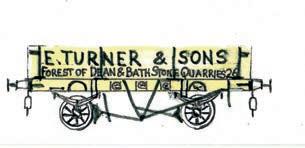

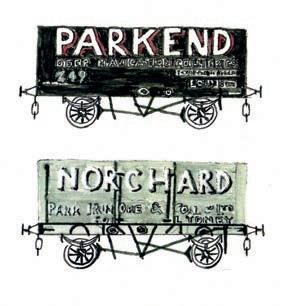
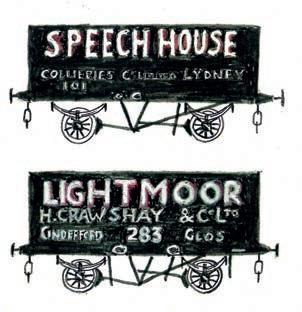

Contents Private Owner wagons 5 UK Railways Background 6 A Town of Brewery Railways 14 Bodmin and Wadebridge Railway (Wenford Bridge Branch) 19 Bowaters & Sittingbourne & Kemsley Light Railway 26 Dove Holes and Tunstead Quarries 33 Gloucestershire Warwickshire Steam Railway (GWSR) 44 e Hawkhurst Branch – the Hop Pickers’ Line 49 Mid Hants Railway (the Watercress Line) 57 Morwellham Quay 65 e Railways of North Norfolk 70 Oakhill Brewery Railway 79 e Railways of Somerset 84 e Railways of Yorkshire 102 e Snailbeach District Railway 136 Snibston Colliery & Swannington Railway 143 Southampton Docks and its Railways 148 Southwold Railway 160 Surrey Border & Camberley Railway 167 T. W. Ward, Scrap Merchants of Grays, Essex 170 Tilbury Docks and its Railway 175 Acknowledgements 184 Index 181
A selection of six private owner coal wagons owned by some of the numerous collieries and stone quarries that operated in e Forest of Dean, Gloucestershire.
Replica of Richard Trevithick’s 1804 locomotive that pre-dated Stephenson’s Rocket by some 25 years. It is seen here at the Iron Bridge Museum in Shropshire during 2009.

Background to UK Railways

Railways in the UK have always attracted both ridicule and a ection in equal proportions since the days of ‘railway mania’ in the 1840s when investment into railway lines escalated, fuelled
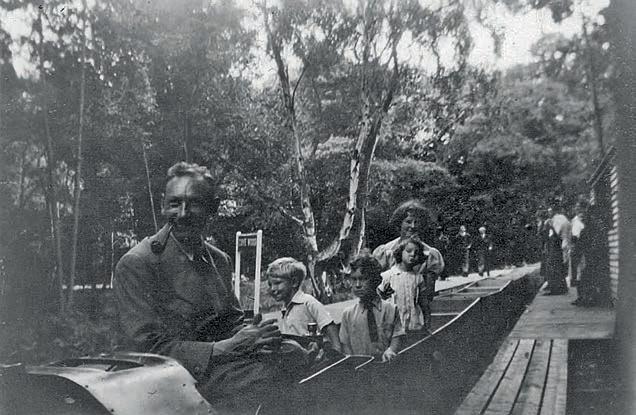
by the promise of investment shares returning untold wealth to the speculators. Unfortunately there was no government control over the shaping of our railway network, resulting in a bizarre
A small industrial Kerr Stuart ‘Wren’ Class 0-4-0T locomotive Lorna Doone built in 1922 working at the Devon County Council Wilmington Quarry near Tavistock. It was one of three with Peter Pan and Pixie.
UK Railways Background 7

A GWR Class 4200, 2-8-2T No. 4247 built in 1916 now in preservation at the Bodmin and Wenford Railway, seen here in 2010 at Bodmin station.

situation of di erent private companies constructing their own lines often running almost parallel to their competitors and small branch lines that could never be prosperous.
e investors, who were not only the wealthy landowners, merchants, bankers and parliamentarians, but also the better o general public, were all seemingly beguiled into this heavily promoted ‘foolproof’ risky venture. Often the general public did not have su cient assets to counter any losses and could only a ord the deposit.
By 1846 around 272 Acts of Parliament had been passed to set up new railway companies with proposed routes totalling 9,500 miles. It is estimated that only a third of these actually started to get built; others collapsing with no funds. Still others were bought out by larger competitors or companies set up in the name of building a railway, but used instead as a fraudulent means of diverting the hapless investors’ money into some other enterprise.
Needless to say the collapse of the railway bubble was inevitable and when it came many
A Gresley designed A4, 4-6-2 No. 60026 Kestrel entered service for LNER on the East Coast Main Line in 1937 on the Kings Cross-Edinburgh route. e name was changed to Miles Beevor in 1947.

8 Railways Through The Ages
Southern Region (SR) Lord Nelson Class 4-6-0
No. 850 Lord Nelson, designed by Richard Maunsell built at Eastleigh in 1925 and seen here in preservation pulling into Headcorn station, Kent in July 2007. ey were originally introduced for the boat train tra c to Dover and Folkestone.
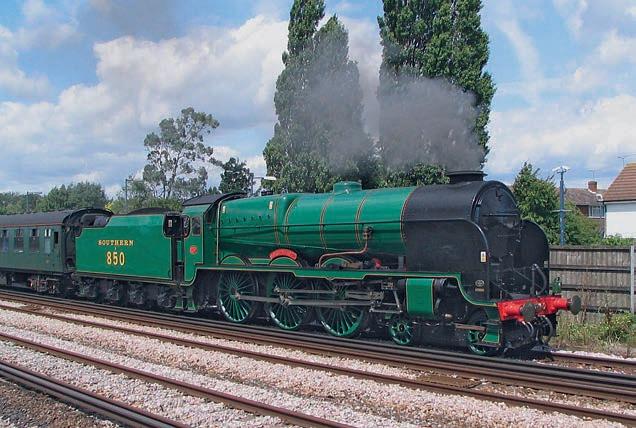
investors lost everything as companies called in their dues. One of the leading protagonists was George Hudson, a politician and nancier, who became known as the ‘Railway King’ and controlled a signi cant number of railways, especially in the Yorkshire area. He is reported to have used shareholders’ cash to have his own station built on the York to Beverley Railway that bordered his Londesborough Hall estate. Unfortunately, his dubious nancial practices with his shareholders’ money ended in bankruptcy when the bubble burst.
In spite of these nancial calamities, the UK was nevertheless left with 6,220 miles of serviceable track. In the years that followed and up to the beginning of the First World War in 1914 the network increased to 23,440 miles. is was reduced between the First and Second World War by some 1,300 miles due to the increase in road transport. ere were more than 120 railway companies by 1923, when these were amalgamated under the 1921 Railways Act into four companies: Southern Railway, Great Western, London Midland and Scottish, and London and North Eastern Railway. e government of the day hoped that this would stem the losses and reduce intercompany competition.
After the Second World War the network was tired and run down, many more branch
lines were closed and the big four companies were nancially struggling, which forced the government to nationalise the industry in 1948, naming it British Railways. During the 1950s the railways continued losing money, with freight being gradually transferred to road transport and the government pouring increasing amounts of public money into the loss-making organisation.

A modernisation plan set out in 1955 looked at replacing steam locomotives with diesel and electric traction, but the losses just increased. A radical solution had to be found. is was provided by ICI’s Dr Richard Beeching who joined the British Railways Board with a government remit to cut the losses and improve e ciency.
Between 1960 and 1965, Beeching assessed the remaining 18,000 miles of track and came up with two reports which identi ed 2,363 stations and 6,000 miles of routes and branch lines that were considered expendable. He also indicated that more use of containerisation for rail freight was necessary and that major trunk routes should be developed. ere were protests from many areas and Beeching’s plans became known as ‘ e Beeching Axe’. A few lines and stations were reprieved, but most of his recommendations were endorsed by the government.
BR were still building steam locomotives to standard designs during this period, while on the Continent lines were mainly being constructed and converting to overhead electric traction, with good use of diesel locomotives being made where necessary and steam quickly disappearing from the scene.
Although a few diesel locomotives were built for, and run by, BR between 1948 and the early 1950s, no large scale manufacturing took place. It wasn’t until the Modernisation Plan of 1955 that diesels for mainline duties were rushed into operation in greater numbers. Unfortunately many su ered reliability problems and were in service only a short while. e last steam locomotive built by BR in Swindon Works was a Class 9F 2-10-0, No. 92220 Evening Star, in 1960, but by this time all steam services were being replaced by more reliable diesel and electric traction. Steam services ceased completely after the last BR passenger service, the Fifteen Guinea Special, in August 1968 (£15-15 shillings = £15.75p).
During this time there were still private railways operating, but these were mainly industrial and operating within the con nes of their company boundaries. ey were a mixture of standard gauge, 4ft 8½in (1,435mm) and various narrow gauges and operated in breweries, quarries, distilleries, private estates,
An 0-4-2T locomotive built by W.G. Bagnall No. 3050 in 1953 for the 2ft (610mm) gauge railway of Rustenburg platinum mine of South Africa. It is now in preservation at the Welsh Highland Railway in Porthmadog, North Wales.

collieries, docks and other manufacturing facilities. Most have now disappeared into the annals of history.
During the ensuing years the BR workforce was drastically reduced in line with the requirements of the new technologies; diesel and electric locomotives were more e cient and reliable. Electric signalling was becoming the norm and more centralised, and the short lengths of track were being gradually replaced by long lengths of welded rail to give a quieter and more comfortable ride for the passenger. In 1976 the High Speed Train (HST) was introduced on the Western Region from London Paddington to Bristol at 125mph. A total of 197 power cars were built and some are still in operation around the network, especially in Scotland.
Privatisation came along in 1996, putting an end to nearly 50 years of British Rail. Private companies now competed for franchises to run trains on the main routes and their branches. e railway infrastructure, such as track, signalling and stations was to be the responsibility of a new public body called Railtrack – although maintenance was contracted out to private companies; not always with the best safety records.
New rolling stock in colourful liveries replaced a considerable amount of old BR stock

9
UK Railways Background
Railways Through The Ages
Four LMS Stanier locomotives at an unknown shed in the early 1950s.
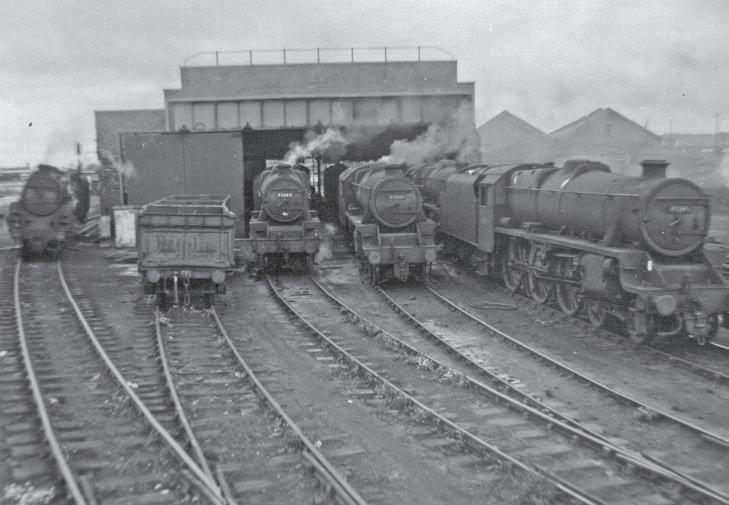
e one on the extreme left is an unknown number; next on the right is Derby built 45660, Jubilee Class 4-6-0 named Rooke. en Vulcan Foundrybuilt 45045, Class 5MT, 4-6-0 and nally Armstrong Whitworth built 45345 another 5MT. All locomotives were built during 1934.
with new suburban and long distance multiple unit trains. In 2006 the government launched an enquiry into the perennial railway problem of escalating costs, this time partly caused by the fallout from horri c accidents at Hat eld and Potters Bar and partly by increasing maintenance costs and reduced maintenance skills in Railtrack. is resulted in Railtrack being replaced by Network Rail, a non-pro t company where any pro t was to be used
BR Standard Class 9F, 2-10-0 No. 92203 Black Prince, built at Swindon in 1959 just before Evening Star, the last 9F and the last steam locomotive to be built for BR. It is seen here in preservation at the Cranmore 150 Quarry Gala Weekend, Somerset, in June 2008.
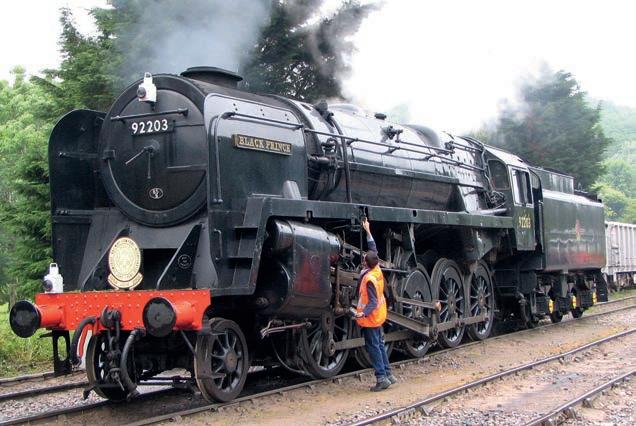
for the bene t of the business. It is, in fact, a case of renationalisation. However, this is to be taken one step further by 2023 to become Great British Railways (GBR), a state-owned public body that will set timetables, sell tickets in England and manage rail infrastructure. It will also issue contracts to private operators. At the time of writing, we have the Channel Tunnel and Eurostar operating to London St Pancras on the High Speed 1 line

10
is is a ne example of a beautifully restored Class 33 diesel No. 33063, R.J Mitchell, designer of the Spit re. A total of 98 were built by the Birmingham Carriage and Wagon Co. between 1960-1962 and nicknamed ‘Cromptons’ as electrics were installed by Crompton Parkinson. Now resident on the Spa Valley Railway and seen here at Eridge station in Kent.

A 1979 photo of Class 37 diesel electric locomotive, 37132, passing through Treeton in South Yorkshire hauling a train of mainly coal. A total of 309 were built between 1960 and 1965 as part of the BR modernisation scheme and were nicknamed ‘tractors’ because of the industrial sound of the engine.

ree GB Railfreight type 73 electro-diesel locomotives, 73962, 63 and 65 at their North Tonbridge yard in 2017 being readied for their next work assignments. After at least 50 years’ service (1965) they are still widely used especially in the south where freight from outside enters the third rail 750 Volt DC network. A total of 49 were built at Eastleigh and Vulcan Foundry.


UK Railways Background 11
A First Great Western HS 125 diesel at Paddington station in 2016 just arrived from Bristol Temple Meads. 197 of Class 43 were built between 1975 and 1982. Capable of 125mph (201kph) there was a power car at each end of the train. ese trains have served East Coast, East Midlands, Grand Central, Cross Country and the Network Rail Measurement trains.

Eurostar trains are the international link between the UK and the rest of Europe from St Pancras station, down the HS1 line to Folkestone then under the English Channel to France, Belgium and the Netherlands. e service was started in 1994 and there are 11 Class 373 and 17 Class 374 train sets travelling at 199mph (320kph).

Tornado seen here in June 2011 is a brand new locomotive built as an LNER Peppercorn, 4-6-2 Class A1 No. 60613 in 2008. It was the rst locomotive to be built since the last BR locomotive, Evening Star, in 1959. Seen here hauling a day excursion.

Railways Through The Ages

12
across to Paris and Brussels and now to Amsterdam. Stations have been upgraded and rebuilt, especially London Bridge, providing a more e cient service to London commuters, the Great Western line from Paddington to Bristol being part electri ed and many more improvements
UK Railways Background 13

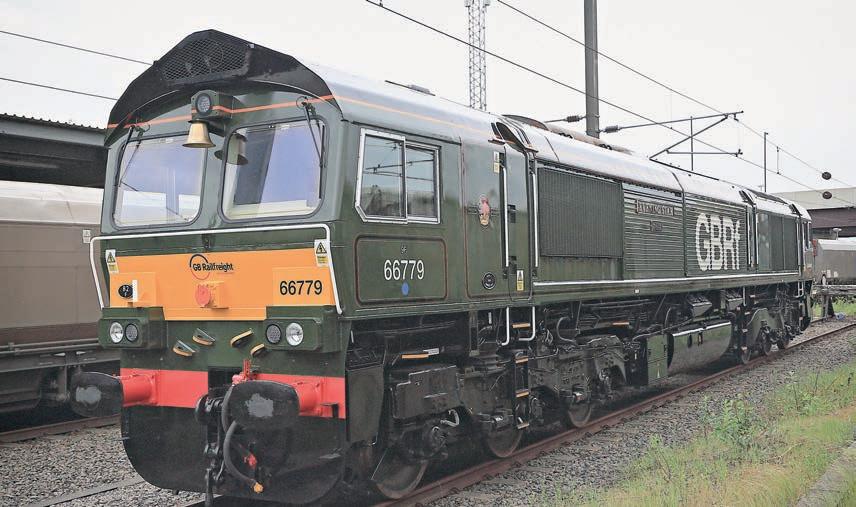

around the UK. Another High Speed line, HS2 is currently under construction from London going north to Birmingham and beyond in the future. is book provides an overview of some of the industrial, passenger and heritage railways of the past and present.
Class 66 in pristine livery hauling equally attractive new Tarmac bogie hopper cement tank wagons out of Tunstead cement works in the Peak District.
e last of 700 Class 66 No. 66779 manufactured by EMD in Illinois USA in 2015. It has nostalgically been named Evening Star after the last steam locomotive to be built for BR. It also displays the shed plate of 82F, Bath Green Park where it was last based. A traditional American warning bell is tted to both ends of the locomotive.
Ind Coope Ltd

Brewery showing both Midland Railway and Great Northern Railway wagons with one on its own having bow ends and two covered wagons with sliding hatches. e Ind Coope brewery is at the back with tall chimneys with the wooden casks (barrels) in front. e signal in front of the single wagon is an early double arm type that would be manually operated to lower and raise each arm.
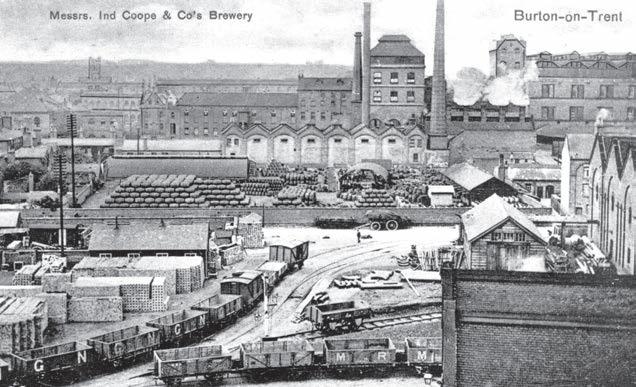




 John Legg and Ian Peaty
John Legg and Ian Peaty




























